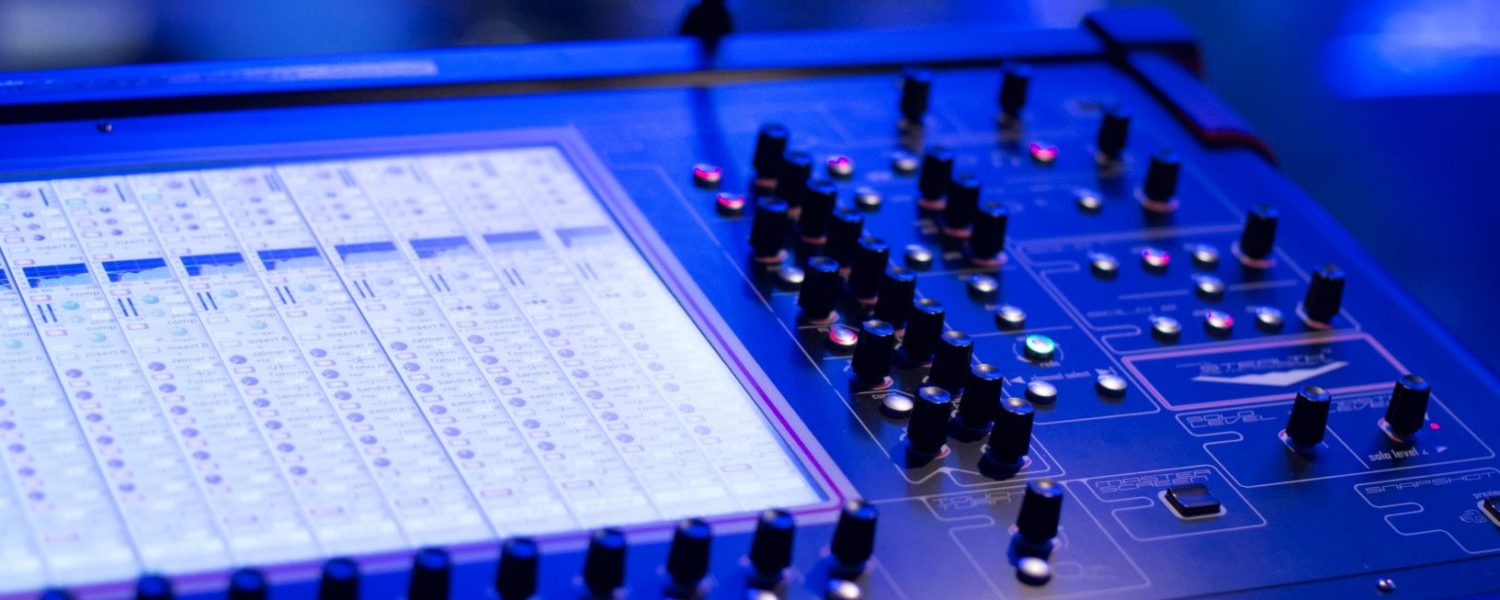By Jim Sweeney
How much easier would video streaming be if those watching at home could easily overlook murky audio, poor camera angles and insufficient lighting?
But they don’t.
We’ve all seen too many movies and TV shows to let us ignore those deficiencies. Of course, the members of your church don’t expect a movie-quality production, but low-quality broadcasts take away from the viewing experience and, eventually, could lose your viewership.
Do You Need Better Lighting?
How can you tell if you need better lighting? It’s safe to assume that any church or worship space not designed or modified specifically for video production can benefit from improved lighting.
Looking for what to improve? It seems counterintuitive, but don’t just trust your eyes.
We’ve been blessed with eyes that are more sophisticated than the most expensive cameras. And perhaps more impressive is that our brains can fill in the details of what we don’t see.
It’s easy to overlook a shadow in person because our brains process what the shadow is covering. Amazing! However, that ability doesn’t transfer to live streams. The same shadow that goes unnoticed by those in attendance is distracting for people watching the stream.
To get a better sense of what we’re talking about, try this exercise. Watch a streamed service and note whether parts of the podium are in shadow and whether people move in and out of the light. Do the windows let in too much light or not enough? Are people’s faces in shadow? Is all the light coming from overhead? Is there glare on sunny days?
How Can You Tell What You Need?
If you can hire professionals to assess and design the lighting, or if you have a qualified volunteer to help, that’s wonderful. But even if it’s a DIY situation, don’t worry! There are some simple things you can do to improve the lighting and your viewers’ experience.
Begin by identifying the light sources. How is your stage lit? Do you rely on natural light from large windows? How does the light change on cloudy days and how do you compensate in the evening and during different seasons?
Are all the artificial lights directly overhead and pointed straight down? Do you have track lighting? If so, where is it pointed? Is all the light coming from one direction? How far from the altar are the lights? Is there lighting focused specifically on the podium?
Again, don’t trust your eyes — judge by what you see on the live stream. Use an inexpensive light meter to identify dark areas and uneven lighting. Once you know where the problems are, you can begin to fix them.
How to Fix Lighting Problems
Some people would suggest to add more lights, but that can quickly become an expensive endeavor. Luckily, making adjustments to the fixtures and equipment that you already have can usually achieve the desired effect.
While your live streaming audience needs more light than your in-person audience does, you don’t want to distract those in attendance by making them sit under hot lights or cluttering your church with light stands.
The goal, of course, is to provide the best experience for both audiences.
Problem: Faces in the Shadow
SOLUTION: The shadows you see under hair, brows and noses are most likely caused by overhead lights shining directly down. If possible, adjust these lights so that they shine at an angle toward the pulpit. That will eliminate the worst of the shadows. Lower lighting in front also can also fix this.
Problem: The Image Is Too Dark or Too Light
SOLUTION: If your stream is too dark, open the aperture in the camera’s lens wider or slow down the shutter speed to twice the frame rate. Experiment with the gain to see if you can increase it without hurting overall quality. Conversely, if it’s too light, narrow the lens aperture and speed up the shutter. Everything is a tradeoff, so experiment until you find the best balance.
Problem: There Are Dark Spots on the Stage
SOLUTION: Dark spots are usually caused by insufficient lighting and lighting gaps. Reposition the lights so that they cover your stage more evenly. If necessary, add additional fixtures to fill in the gaps.
Problem: The Lights Are Different Colors
SOLUTION: Bulbs of different color temperatures can produce light of different shades. This can be done deliberately for dramatic effect, but if that’s not your goal, then simply make sure all the bulbs are the same.
Problem: The Sunlight Is Overwhelming
SOLUTION: A pulpit flanked or backed by large windows can be flooded with sunlight, washing out your stream and making your subjects “glow.” If you can’t reposition the camera to remove the windows from the shot, then cut down on the sunlight by adding shades or blinds to the windows. If that’s not practical, try a filter on the camera.
Problem: There’s No Separation Between People and the Background
SOLUTION: Use backlighting. This is one of the most common mistakes in live streaming. Having all your light come from the front, sides or overhead robs the image of depth and flattens people into the background. Adding light behind the podium creates separation and depth of image.
Problem: Faces Disappear When People Turn Their Heads
SOLUTION: Make sure that your stage is lit from the sides as well as from the front and back. Side lighting will illuminate faces whenever people turn.
If you’re looking for tips on gear or lighting techniques, you can find many fine tutorials online. Don’t expect to get everything right the first time and don’t stop experimenting until you’re happy with the outcome. The result will be a much better experience for your viewers.
This information is courtesy of Boxcast, a complete, easy-to-use live video streaming solution for organizations, www.boxcast.com.












